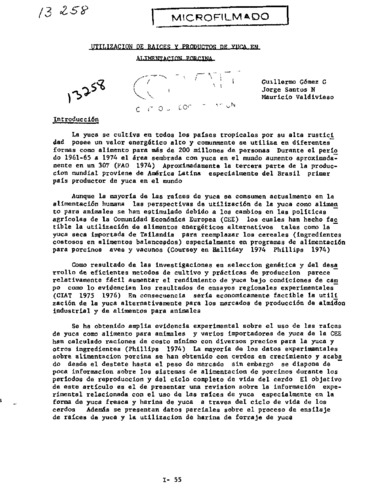Utilización de raíces y productos de yuca en alimentación porcina
Cassava roots are an excellent source of energy that can be used fresh, dried or as silage in swine feeding programs. Chopped fresh roots with a low cyanide content can be given to pigs throughout their life cycle, separately or mixed with a supplement that contains proteins, minerals and vitamins. Roots with a high cyanide content are not easily consumed by pigs because of their high linamarin content. High levels of cassava meal (60-70 percent) have been studied experimentally at CIAT and compared to common maize-based diets in integrated feed programs for the pig's life cycle. Performance of weaned piglets was inferior in the cassava- based feed programs. Met supplementation did not seem essential in diets based on CM. Whole cassava roots can be stored in silos covered with earth, or chopped and kept in polyethylene bags or in trench silos, for periods up to 6 mo without a significant loss in their nutritional value as swine feed. Root silage kept up to 6 mo is easily consumed by pigs. Cassava forage production for ruminants offers very good perspectives. Cassava leaf meal can be used in relatively low levels (~ 20 percent) in diets for growing and finishing pigs. There are possibilities of using higher levels in diets for gestating sows. Because of its low protein content, feeding programs based on high levels of cassava require considerable quantities of protein supplement in comparison to programs that use conventional energy sources such as cereal grains. These aspects should be considered in economic studies on the feasibility of using cassava in animal nutrition. (AS-CIAT)

